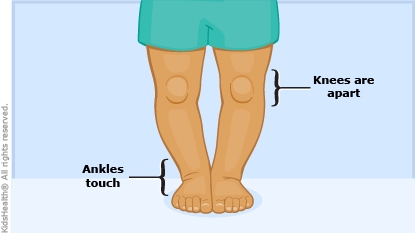- Home
- Parents Home
- Allergy Center
- Asthma Center
- Cancer Center
- Diabetes Center
- A to Z Dictionary
- Emotions & Behavior
- First Aid & Safety
- Food Allergy Center
- General Health
- Growth & Development
- Flu Center
- Heart Health
- Homework Help Center
- Infections
- Diseases & Conditions
- Nutrition & Fitness Center
- Play & Learn Center
- School & Family Life
- Pregnancy Center
- Newborn Center
- Q&A
- Recipes
- Sports Medicine Center
- Doctors & Hospitals
- Videos
- Para Padres
- Home
- Kids Home
- Asthma Center
- Cancer Center
- Movies & More
- Diabetes Center
- Getting Help
- Feelings
- Puberty & Growing Up
- Health Problems of Grown-Ups
- Health Problems
- Homework Center
- How the Body Works
- Illnesses & Injuries
- Nutrition & Fitness Center
- Recipes & Cooking
- Staying Healthy
- Stay Safe Center
- Relax & Unwind Center
- Q&A
- Heart Center
- Videos
- Staying Safe
- Kids' Medical Dictionary
- Para Niños
- Home
- Teens Home
- Asthma Center
- Be Your Best Self Center
- Cancer Center
- Diabetes Center
- Diseases & Conditions
- Drugs & Alcohol
- Expert Answers (Q&A)
- Flu Center
- Homework Help Center
- Infections
- Managing Your Medical Care
- Managing Your Weight
- Nutrition & Fitness Center
- Recipes
- Safety & First Aid
- School & Work
- Sexual Health
- Sports Center
- Stress & Coping Center
- Videos
- Your Body
- Your Mind
- Para Adolescentes
A to Z: Genu Varum
May also be called: Bowlegs
Genu varum (GEE-noo VAY-rum) is an exaggerated bending outward of the legs from the knees down that causes the knees to be spread apart when the feet and ankles are touching.

More to Know
Genu varum is a normal condition in children up to 18 months of age. Because of the way their bodies are positioned in the uterus, almost all babies are born bowlegged. Once they begin to walk and their legs start to bear weight, their legs usually straighten out.
Bow-leggedness beyond the age of 2 or bow-leggedness in one leg only can be a sign of a more serious condition, such as Blount disease (which causes abnormal growth in the shinbone) or rickets (a bone growth problem caused by a lack of vitamin D or calcium in the diet).
In most cases, genu varum requires no treatment. If it is the result of Blount disease, treatment may involve leg braces or surgery to straighten the legs. Rickets is usually treated by adding vitamin D and calcium to the diet.
Keep in Mind
Most of the time, genu varum is a perfectly normal condition that corrects itself by the time a child is about 2 or 3 years old. When treatment is necessary, braces or surgery can usually fix it and prevent any problems with walking.
All A to Z dictionary entries are regularly reviewed by KidsHealth medical experts.

© 1995- The Nemours Foundation. KidsHealth® is a registered trademark of The Nemours Foundation. All rights reserved.
Images sourced by The Nemours Foundation and Getty Images.
